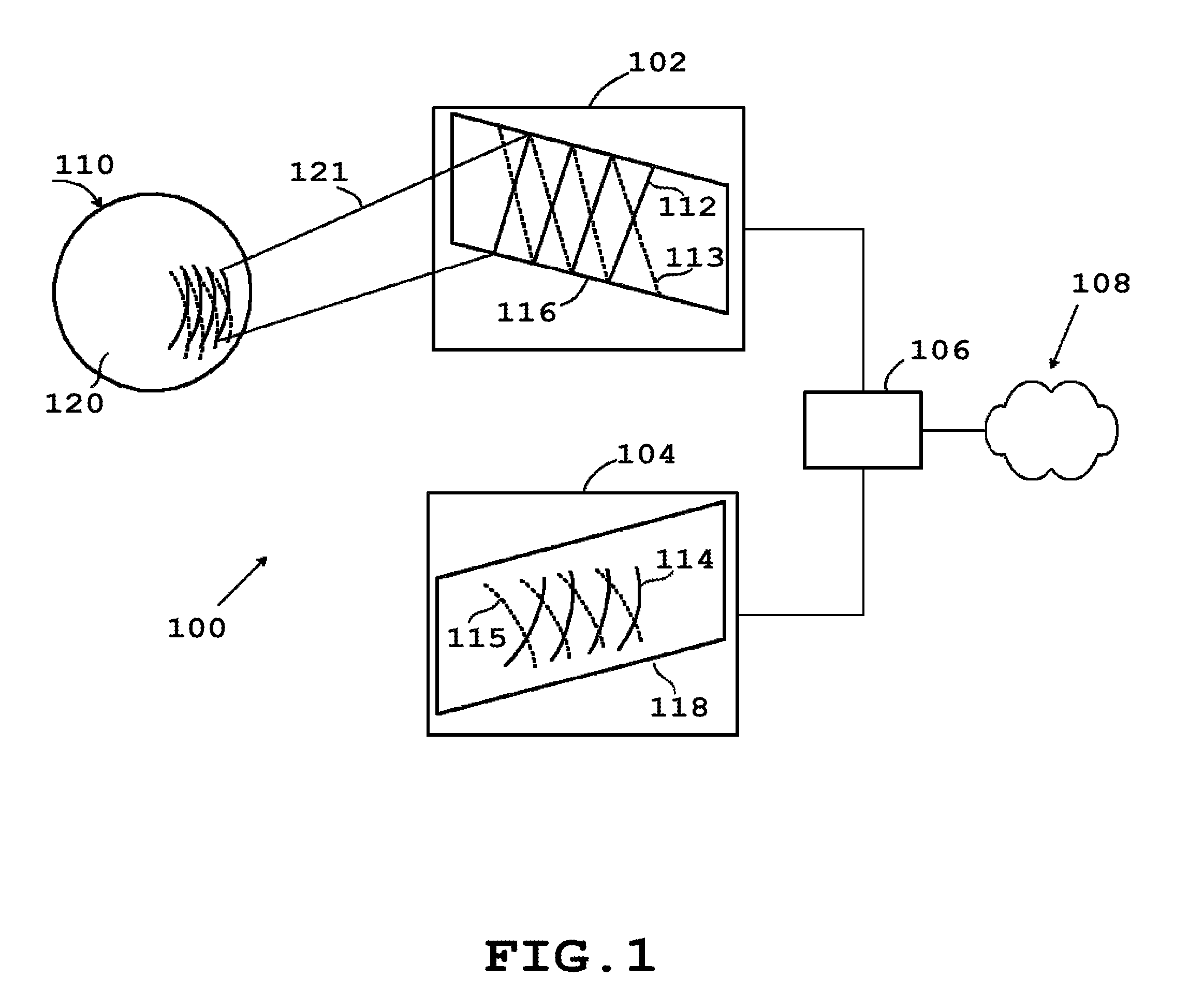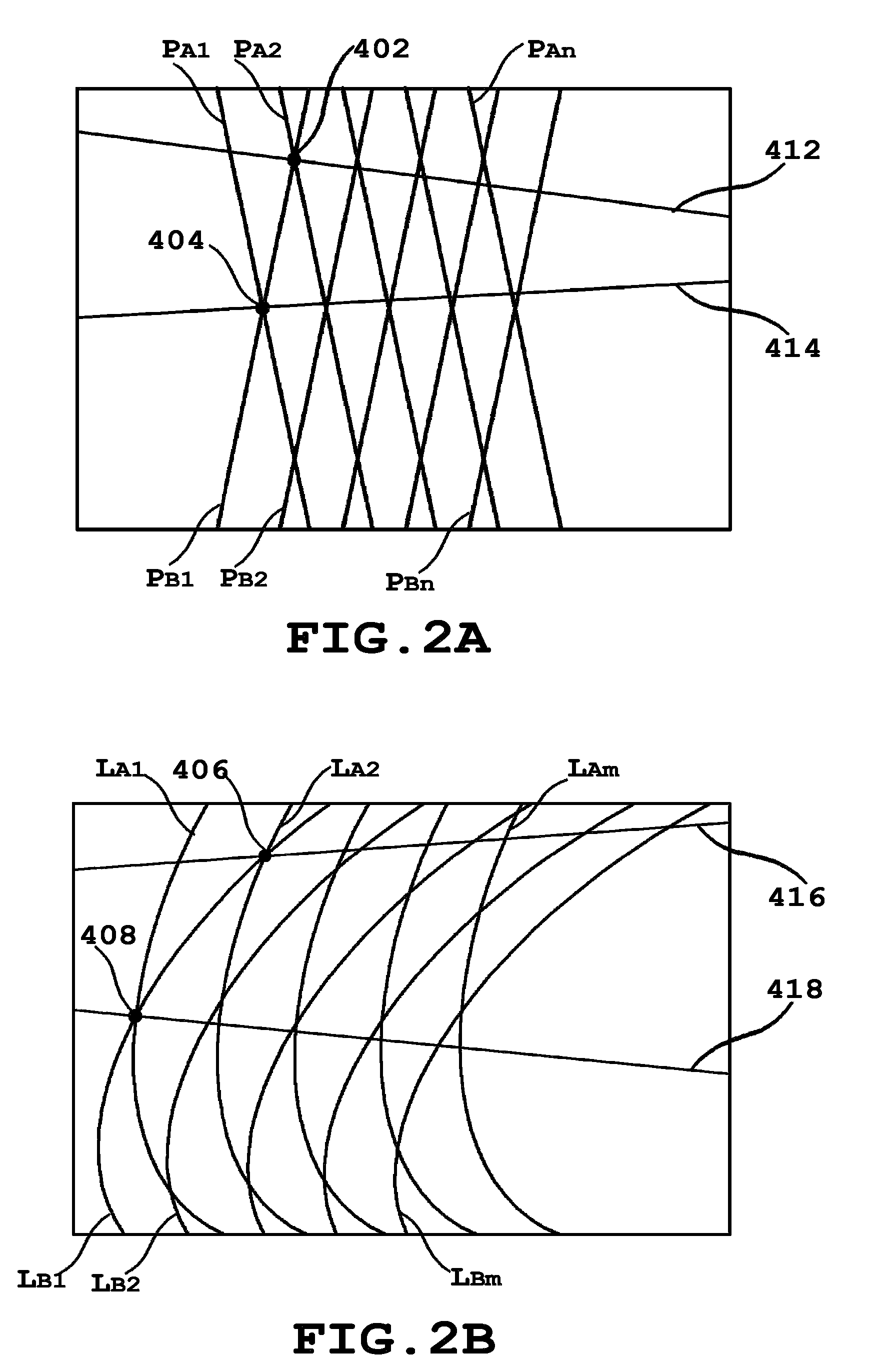Method and apparatus for high-speed unconstrained three-dimensional digitalization
- Summary
- Abstract
- Description
- Claims
- Application Information
AI Technical Summary
Benefits of technology
Problems solved by technology
Method used
Image
Examples
Embodiment Construction
[0029]The method of the present invention is presented in the context of a system, providing means for digitalization of three-dimensional objects, by obtaining substantial amounts of accurate range coordinates, free of contact, in real-time, illuminating objects surface by multi-line patterns, identifying each pattern, and calculating point coordinates by triangulation.
[0030]FIG. 1 is a schematic representation of at least one embodiment of the system of the present invention. The digitizing system 100 consists of a radiation projector 102 and an image detector 104, both coupled to a computer 106. The image detector 104 is fixed relative to projector 102 and positioned at a measurable distance from image detector 104. Projector 102 and detector 104 have a measurable convergent orientation toward object 110.
[0031]Projector 102 radiates a set of patterns, 112 and 113, emanating from plane 116, where pattern strip projections are exemplary represented that solid sheet 121. Image detec...
PUM
 Login to View More
Login to View More Abstract
Description
Claims
Application Information
 Login to View More
Login to View More - R&D
- Intellectual Property
- Life Sciences
- Materials
- Tech Scout
- Unparalleled Data Quality
- Higher Quality Content
- 60% Fewer Hallucinations
Browse by: Latest US Patents, China's latest patents, Technical Efficacy Thesaurus, Application Domain, Technology Topic, Popular Technical Reports.
© 2025 PatSnap. All rights reserved.Legal|Privacy policy|Modern Slavery Act Transparency Statement|Sitemap|About US| Contact US: help@patsnap.com



